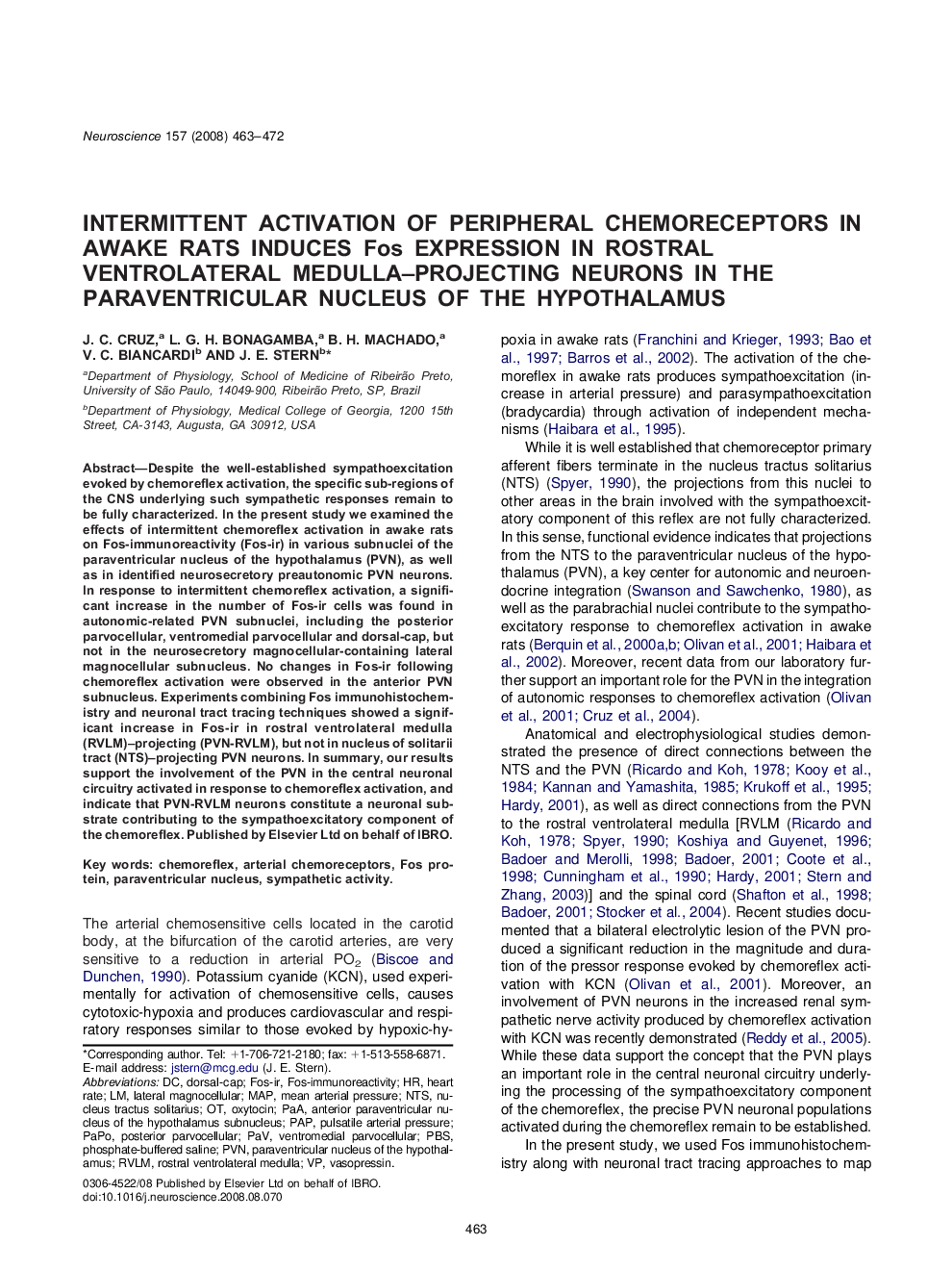| Article ID | Journal | Published Year | Pages | File Type |
|---|---|---|---|---|
| 4340525 | Neuroscience | 2008 | 10 Pages |
Abstract
Despite the well-established sympathoexcitation evoked by chemoreflex activation, the specific sub-regions of the CNS underlying such sympathetic responses remain to be fully characterized. In the present study we examined the effects of intermittent chemoreflex activation in awake rats on Fos-immunoreactivity (Fos-ir) in various subnuclei of the paraventricular nucleus of the hypothalamus (PVN), as well as in identified neurosecretory preautonomic PVN neurons. In response to intermittent chemoreflex activation, a significant increase in the number of Fos-ir cells was found in autonomic-related PVN subnuclei, including the posterior parvocellular, ventromedial parvocellular and dorsal-cap, but not in the neurosecretory magnocellular-containing lateral magnocellular subnucleus. No changes in Fos-ir following chemoreflex activation were observed in the anterior PVN subnucleus. Experiments combining Fos immunohistochemistry and neuronal tract tracing techniques showed a significant increase in Fos-ir in rostral ventrolateral medulla (RVLM)-projecting (PVN-RVLM), but not in nucleus of solitarii tract (NTS)-projecting PVN neurons. In summary, our results support the involvement of the PVN in the central neuronal circuitry activated in response to chemoreflex activation, and indicate that PVN-RVLM neurons constitute a neuronal substrate contributing to the sympathoexcitatory component of the chemoreflex.
Keywords
PBSChemoreflexPAAFos-immunoreactivityPAPPaVRVLMNTSrostral ventrolateral medullaoxytocinArterial chemoreceptorsHeart ratepulsatile arterial pressuremean arterial pressureSympathetic activityFos-irPVNPhosphate-buffered salinemapnucleus tractus solitariusparaventricular nucleus of the hypothalamusparaventricular nucleusvasopressinFos proteinPaPo
Related Topics
Life Sciences
Neuroscience
Neuroscience (General)
Authors
J.C. Cruz, L.G.H. Bonagamba, B.H. Machado, V.C. Biancardi, J.E. Stern,
